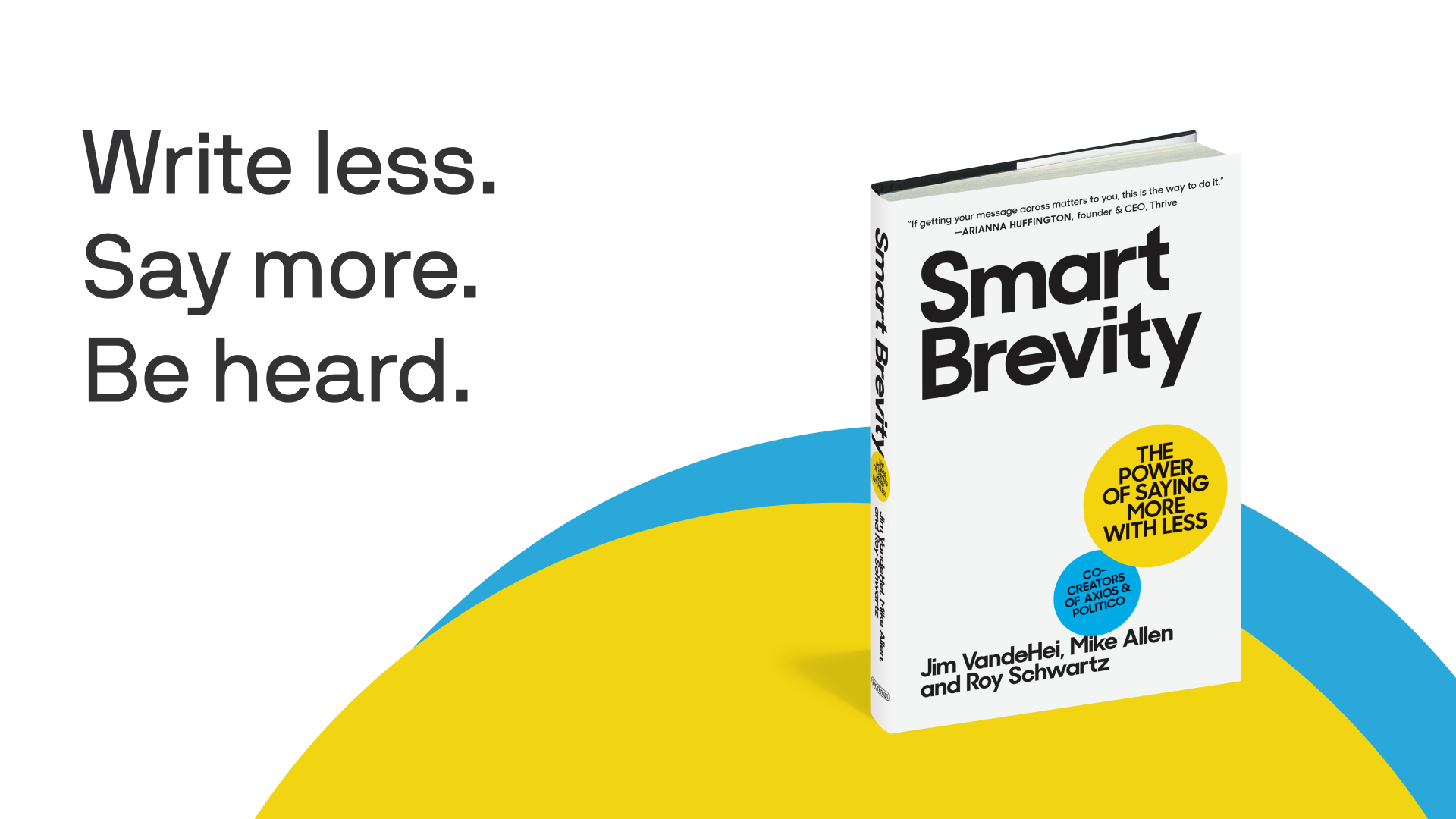| | | | | | | | | | | Axios Science | | By Alison Snyder · Sep 22, 2022 | | Welcome back to Axios Science. This week's newsletter is 1633 words, about a 6.5-minute read. - Send your feedback and ideas to me at alison@axios.com. You can reach Eileen Drage O'Reilly at eileen@axios.com.
- Sign up here to receive this newsletter.
- Axios' founders wrote a book about our signature style. "Smart Brevity: The Power of Saying More With Less." Order here.
| | | | | | 1 big thing: AI is digging up how plants tolerate drought and heat |  | | | Illustration: Eniola Odetunde/Axios | | | | Artificial intelligence is guiding plant breeding — and helping to speed up the development of crops that scientists hope can better cope with devastating drought and heat. Why it matters: Droughts in China, Europe, East Africa and North America are damaging crops and contributing to food insecurity and hunger crises around the world. - Parts of the American corn belt are experiencing extreme or exceptional drought. In Nebraska, 35% of the corn crop is considered to be in poor or very poor condition.
- Some of these prolonged dry periods are driven by human-caused climate change, others are worsened by it — but, all together, they are a window into the drier and hotter future predicted in some regions.
- Those changes in climate and growing global food insecurity are putting pressure on breeders to develop more resilient plants faster.
What's happening: Machine learning algorithms and other AI tools have been used by some companies for about a decade, but they're becoming more widely available to breeders. - Breeders use them to analyze data that reflects what's known about plant biology — for example, how high or fast a plant grows, and whether it can withstand hot or dry conditions in a region.
- That data can help AI predict the combination of genes — and the genes that regulate them — that can improve a plant's tolerance without reducing the yield.
- Instead of crossing plants for generations to find the best-suited ones, breeders can use AI to more quickly predict which genetics will yield the desired traits.
There are some tradeoffs, though, between how much water a plant uses and how much grain, corn or other product a plant can yield — and debate about how far breeders can go with both. - AI can "help breeders walk through this complex labyrinth," says Charlie Messina, a professor of predictive breeding at the University of Florida.
Details: In a recent study, Messina and his colleagues assessed how hybrids of drought-tolerant maize bred with the help of AI grew under different water conditions. - In contrast to earlier research, they report the hybrids bred for better drought tolerance had better yields. (The hybrid is commercially available from Corteva, and scientists from the company participated in the study. Messina previously worked for the company.)
- The scientists also found the hybrid plants had a smaller difference in their yields in normal and dry conditions, meaning they produced a more reliable amount of maize over a range of conditions. One of the challenges climate change presents is hydrological extremes, enhancing both droughts and heavy rains.
But, but, but... A study published earlier this year found gains in corn yields were largely due to climate and improved soil and crop management, not plant genetics. - "This is an important debate because it can influence investments — public and private — in technologies to deal with drought and climate change," Messina says.
- "If we don't figure out the cause of the problem, as a society we may be investing in the wrong solutions," he says.
Potatoes are another staple around the world — and the plants are highly sensitive to heat. - AlphaFold, a deep learning system developed by DeepMind that can predict the structure of proteins, was used along with other tools to study the genes and proteins involved in the response of potatoes to elevated temperatures. (AlphaFold's founders won the Breakthrough Prize in Life Sciences today. See the next item.)
Read the entire story. |     | | | | | | 2. AlphaFold co-developer on what's next for the AI |  | | | Photo illustration: Maura Losch/Axios. Photo: Courtesy of DeepMind | | | | An AI system that can predict the shape of proteins — one of biology's toughest challenges — is turning to new questions about the compounds at the heart of life's molecular machinery, one of its developers told me. Driving the news: The researchers who led the development of AlphaFold — DeepMind founder Demis Hassabis and John Jumper, a senior research scientist at the company — were today awarded one of the $3 million Breakthrough Prizes. Why it matters: Determining the structure of a protein is typically an expensive and time-consuming process, limiting the number of proteins whose shapes are known. - But AI systems are cutting the time it takes to determine the 3D structures of proteins.
- In July, DeepMind announced AlphaFold had predicted the structure of almost every one of the approximately 200 million known proteins.
- It's being used to study proteins in people, potatoes, tuna, honeybees, pathogens and other organisms to try to make progress on problems across the fields of biology and medicine.
I spoke with Jumper earlier this week about AlphaFold. Here are some highlights from our conversation, edited for clarity. Where it stands: The ways scientists are using AlphaFold are "an indication that we're in the beginning of a new era with regards to biology and deep learning." - "These computational methods look like they're going to solve a lot of problems related to biology, and medicine."
What it doesn't do well: AlphaFold doesn't pick up on how single mutations — which can be disease-causing — change the shape and behavior of proteins. - "It is a very, very hard problem because you're talking about like a 1% change in sequence."
In other cases, proteins may have multiple functional states. - "Right now, AlphaFold will produce essentially one of those more or less at random or not in a controllable way."
What's next: In addition to better understanding the effects of single mutations, there is the question of whether the AI can predict the "on" and "off" forms of a protein. - Proteins on ion channels that allow molecules in and out of cells can have two states.
- AlphaFold also enables biologists to ask fundamental questions in comparative biology, including "how one protein that evolved from a common ancestor became different."
|     | | | | | | 3. Worthy of your time |  | | | Neptune seen by the JWST. Photo: NASA/ESA/CSA/STScI | | | | Neptune's rings and moons shine in new JWST photos (Miriam Kramer — Axios) Convictions reversed for US chemical engineer accused of hiding China ties (Natasha Gilbert — Nature) Why Omicron might stick around (Carl Zimmer — New York Times) Past malaria surges linked to amphibian die-off (Andy Carstens — The Scientist) |     | | | | | | A message from Axios | | Axios Smart Brevity book | | |  | | | | Punch through the noise to get people to pay attention with Axios' new book, Smart Brevity. - Learn the secrets for transforming your communication.
Order now for a chance to attend a Smart Brevity workshop with Axios' co-founders. Buy it today. | | | | | | 4. Cancer progress threats |  | | | Illustration: Sarah Grillo/Axios | | | | The great strides in cancer survivability seen in recent decades could be undercut by fallout from the pandemic, the overturning of Roe v. Wade, and continued disparities in health care access, scientists warn, Axios' Eileen Drage O'Reilly writes. The good news: There's been a 32% reduction in American cancer deaths from 1991 to 2019, with a 2.3% drop every year between 2016 and 2019, according to the American Association for Cancer Research. - Plus, the FDA approved eight new "groundbreaking" anticancer therapeutics in one year, the AACR said in its 2022 cancer progress report.
- In that same period from Aug. 1, 2021, to July 31, 2022, the FDA also approved two new diagnostic imaging agents (Locametz and Cytalux) and expanded the use of 10 other cancer drugs.
The bad news: This progress could be offset by threats from multiple fronts, the researchers said. 1) The pandemic caused a "very significant decline" in early detection, screening and overall attention to patient health, AACR president Lisa M. Coussens said at the briefing. - They predict "there will be an increased incidence of late-stage cancer that will start showing up this year and next year," she said.
2) Continued disparities in health care access, combined with underrepresentation of some racial and ethnic groups in clinical trial participation and in the health care workforce, contribute to a higher risk of cancer incidence and death faced by many underrepresented groups, John Carpten, chair of the National Cancer Advisory Board, said in the press briefing. 3) The reversal of Roe v. Wade has led to 17 states so far restricting or banning abortion, which can have ramifications on other medical issues. Adam P. Dicker, a member of the report's steering committee, told Axios that it's surprisingly common for women to experience cancer concurrent with pregnancy — roughly one in every 2,000. - Chemotherapy, radiation therapy, and targeted therapies sometimes include a high risk of fetal malformation or spontaneous abortion, and "uncertainty may prohibit some physicians from prescribing a drug or performing other health services in a timely manner due to the potential legal consequences," the report warns.
Read the rest. |     | | | | | | 5. Something wondrous |  | | | Ants on the west bank of Huancheng River in Handan, China, July 1, 2022. Photo: CFOTO/Future Publishing via Getty Images | | | | There are at least 20 quadrillion ants on Earth, scientists reported this week. The big picture: "Ants are the movers and shakers of ecosystems," Nate Sanders, an ecologist at the University of Michigan, told the NYT. - They aerate soil, carry seeds, eat pests and help to decompose dead insects and plants.
- "Knowing anything about them helps us understand how ecosystems are put together and how they work," Sanders said.
How they did it: Patrick Schultheiss, an ecologist at the University of Hong Kong, and his colleagues arrived at their estimate of 20 quadrillion ants using empirical data collected in more than 489 studies conducted across continents and habitats. - Their total biomass is more than 12 megatons of dry carbon.
- "This exceeds the combined biomass of wild birds and mammals and equals 20% of human biomass," the researchers reported earlier this week in the journal PNAS.
- But their "astounding ubiquity" may amount to even more: the researchers say the number of ants is likely higher because of gaps in data about some types of ants and from some regions of the world.
Background: There wasn't a reliable estimate of how many ants are on Earth or how abundant they are in certain places, the researchers write. - Biologists E. O. Wilson and Bert Hölldobler took a crack at the problem almost 30 years ago using an earlier calculation by another biologist who found there were one million trillion insects on Earth.
- Assuming ants made up 1% of total insects, Wilson and Hölldobler estimated there were as many as 10 quadrillion ants.
Why it matters: By mapping the abundance of ants around the world, scientists now have a baseline for studying and predicting the insects' responses to environmental changes, the scientists wrote. |     | | | | | | A message from Axios | | Axios Smart Brevity book | | |  | | | | Punch through the noise to get people to pay attention with Axios' new book, Smart Brevity. - Learn the secrets for transforming your communication.
Order now for a chance to attend a Smart Brevity workshop with Axios' co-founders. Buy it today. | | | | Big thanks to Laurin-Whitney Gottbrath for editing this newsletter and to Nick Aspinwall for copy editing this edition. |  | | Are you a fan of this email format? It's called Smart Brevity®. Over 300 orgs use it — in a tool called Axios HQ — to drive productivity with clearer workplace communications. | | | | | | Axios thanks our partners for supporting our newsletters. If you're interested in advertising, learn more here.
Sponsorship has no influence on editorial content. Axios, 3100 Clarendon Blvd, Arlington VA 22201 | | | You received this email because you signed up for newsletters from Axios.
Change your preferences or unsubscribe here. | | | Was this email forwarded to you?
Sign up now to get Axios in your inbox. | | | | Follow Axios on social media:    | | | | | |










No comments:
Post a Comment